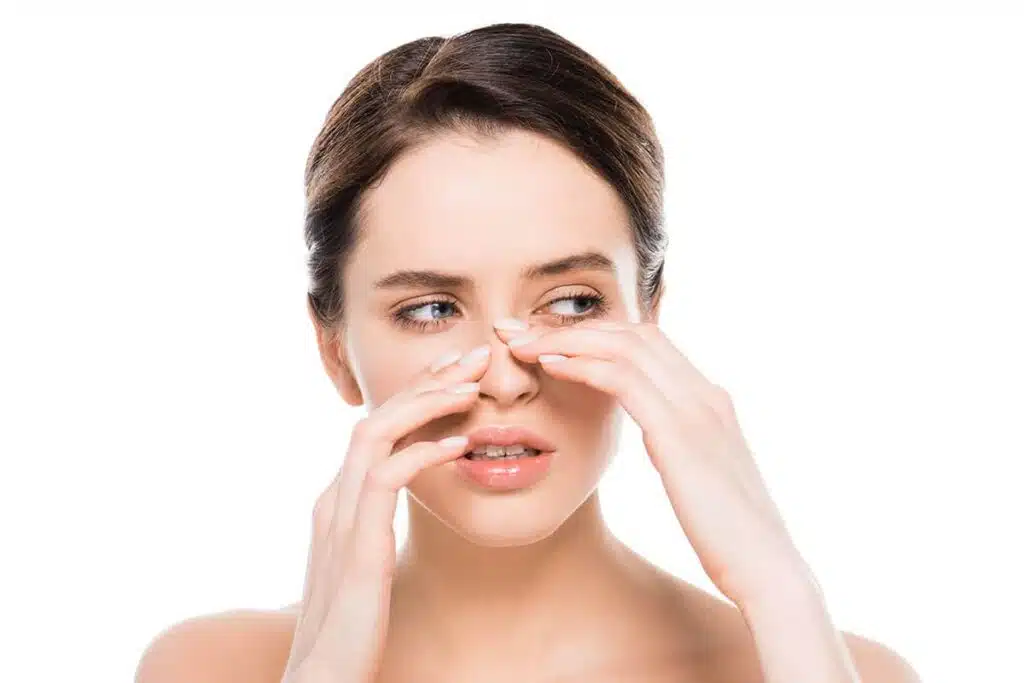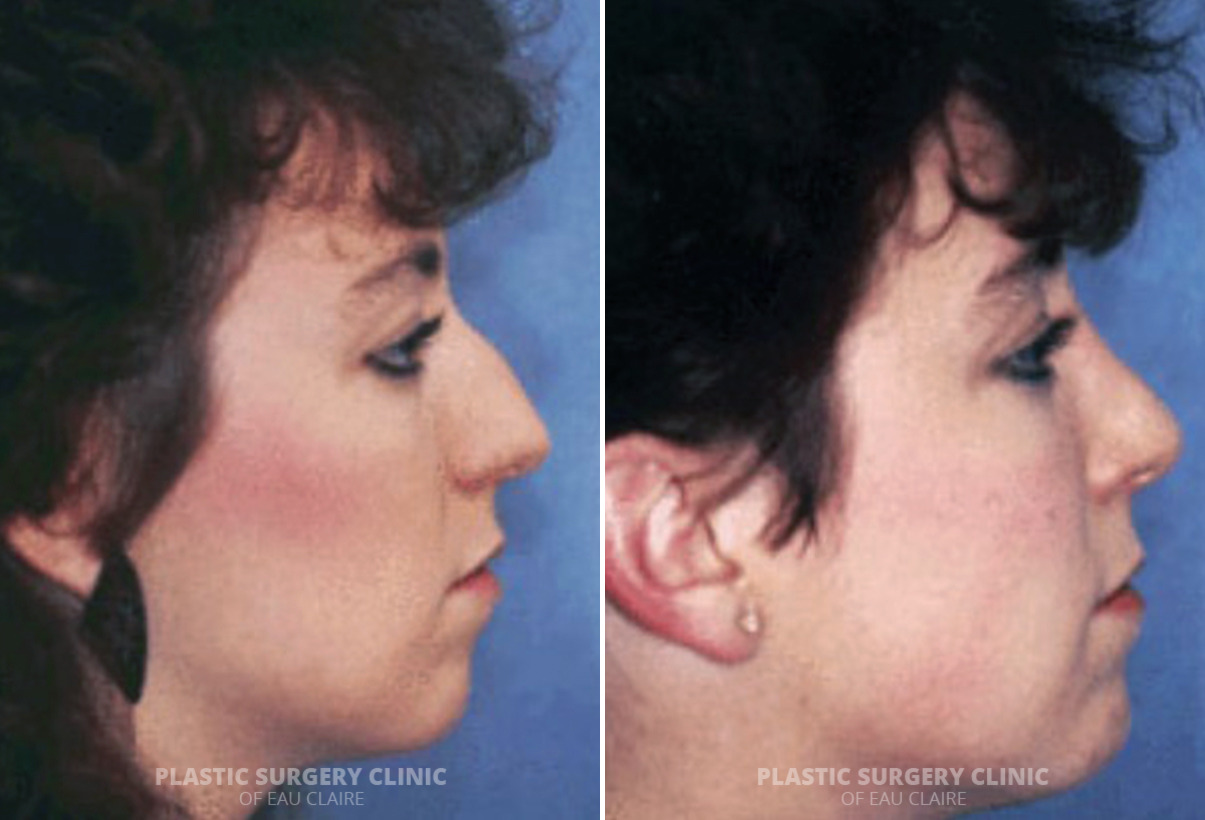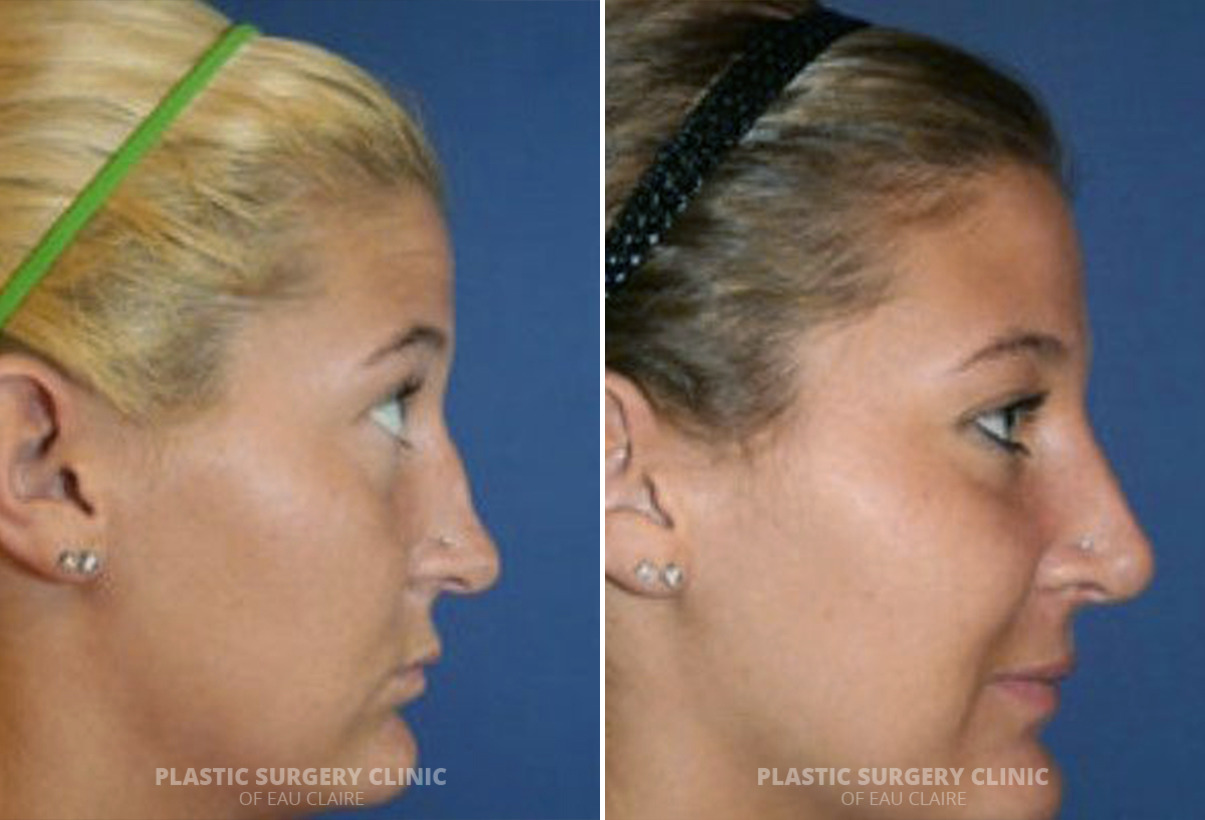Have you noticed small bumps appearing on your nose after rhinoplasty and wondered if it’s normal? Rhinoplasty is an intricate procedure that reshapes the nose, but the healing journey can sometimes be unpredictable, leaving many patients concerned about new or unexpected changes.
While a smooth, refined nose is the ultimate goal, minor irregularities can occasionally appear during the recovery process. If you’re curious about why bumps occur and what you can do about them, you’re in the right place. Let’s dive into everything you need to know.

Why Is There a Bump on My Nose After Rhinoplasty Surgery?
It’s not uncommon for patients to notice bumps or irregularities on their nose following close or open rhinoplasty . In many cases, these bumps are temporary and related to swelling or scar tissue forming as the body heals. Other times, they may be the result of residual cartilage or bone that wasn’t fully smoothed during surgery or even from minor trauma sustained while healing. Understanding the cause is key to determining the best course of action.
Swelling During Healing
Swelling is a natural and expected part of the recovery process after rhinoplasty. As your body works to heal, fluids accumulate around the surgical area, sometimes creating temporary bumps or unevenness along the nasal tip or bridge. This is especially common during the first few weeks to months after surgery, as the delicate nasal tissues slowly settle into their final shape. Patience is key, as most swelling gradually resolves over time, often taking up to a full year for the final, refined results to fully appear.
Residual Cartilage or Bone
In some cases, small amounts of cartilage or bone may remain after rhinoplasty, leading to the appearance of bumps or unevenness. These residual structures might not be immediately visible but can become more noticeable as swelling subsides. This is particularly common in patients who had dorsal humps or more complex nasal reshaping. Depending on the size and location of the residual material, minor imperfections may smooth out over time or may require minor touch-up procedures to achieve the desired final look.
Internal Scarring and Calluses
As part of the body’s healing response, internal scar tissue formation or calluses can occur after rhinoplasty. These structures develop as the nose stabilizes and tissues repair themselves, sometimes creating small nasal bumps or lumps, as well as firmness under the skin. While minor scar tissue often softens and becomes less noticeable over time, thicker or more prominent calluses may require additional treatment if they impact the final appearance. Regular follow-ups with your surgeon can help monitor healing and catch any concerns early.
Post-Operative Trauma
Even after rhinoplasty, the nose remains delicate and vulnerable to injury for several months. Accidental bumps, pressure while sleeping, or even vigorous facial movements can cause minor trauma to the healing nasal structures. This can lead to unexpected swelling, scar tissue, or shifts in bone or cartilage alignment, sometimes creating visible bumps. To protect your results, it’s important to be mindful of your activities and avoid any situations where your nose might be accidentally bumped or strained during recovery.
Are You Ready For A Consultation?
Join our satisfied clients who’ve experienced safe, effective treatments
How to Prevent Bumps on the Nose During Rhinoplasty Recovery
While some post-operative swelling and irregularities are unavoidable, there are important steps you can take to help minimize the risk of bumps forming during your rhinoplasty recovery. Following these tips can support a smoother healing process, protect the delicate nasal structures, and optimize your final results.
Protect Your Nose
Protecting your nose after surgery involves more than just avoiding trauma. Take special care of any nasal splints or external supports your surgeon places, as they help maintain proper shape during the critical early healing phase. Taping your nose as recommended can also control swelling and provide extra support. Be mindful to avoid crowded areas where accidental bumps could occur, and refrain from wearing heavy glasses that put pressure on the nasal bridge. A few careful habits early on can significantly enhance your rhinoplasty results.
Nasal Massages
In some cases, your surgeon may recommend gentle nasal massages to help reduce minor bumps and promote smoother healing. When done correctly, massages can soften scar tissue, encourage even fluid distribution, and minimize firmness beneath the skin. It’s important to only perform massages if specifically advised by your surgeon, as improper techniques can cause more harm than good. Always follow your surgeon’s instructions carefully regarding when and how to massage your nose during recovery.
Apply Cold Compresses
Using cold compresses during the first 48 to 72 hours after surgery can significantly help control swelling and reduce the risk of bump formation. Gently applying a cold pack around (but not directly on) the nose minimizes inflammation and supports a smoother healing process. Always use soft cloth barriers to protect your skin and follow your surgeon’s guidelines regarding how often and how long to apply cold therapy during recovery.
Sleep With Your Head Elevated
Keeping your head elevated while sleeping is one of the simplest and most effective ways to minimize swelling after rhinoplasty. Sleeping on two or more pillows or using a wedge pillow can help promote proper fluid drainage and reduce pressure on the nose. Avoid sleeping on your side or stomach, as this can inadvertently shift healing tissues and increase the risk of developing bumps. Maintaining this sleeping position for several weeks will support a smoother, more symmetrical recovery.
Follow Your Surgeon’s Instructions
Your surgeon’s guidelines are specifically designed to help you heal safely and achieve the best results. Follow all post-operative care instructions closely, including when to return for check-ups, how to care for your nasal dressings, and when to resume normal activities. Avoid strenuous exercise during the initial recovery period, as increased blood pressure can worsen swelling. Additionally, maintain a healthy diet rich in vitamins and nutrients to support tissue repair and a smoother healing process. Small efforts in following instructions can make a big difference in your final outcome.
Treatment Options for Humps and Lumps After Rhinoplasty
If small bumps or irregularities remain after your initial rhinoplasty, don’t worry—several treatment options can help refine your results. Depending on the nature and severity of the bump, non-surgical or minor surgical interventions may be recommended to smooth and enhance the final outcome. Here are some common solutions that your surgeon might suggest:
Dermal Fillers
Dermal fillers offer a non-surgical option to smooth out minor bumps and irregularities after rhinoplasty. By strategically injecting a soft, biocompatible gel beneath the skin, a skilled surgeon can even out contour imperfections and create a more symmetrical appearance. Results from fillers are immediate but temporary, typically lasting 6 to 18 months, depending on the product used. This approach is ideal for rhinoplasty patients with small, localized issues who are not ready to undergo revision nasal surgery.
Steroid Injections
Steroid injections are often used to treat stubborn swelling or excessive scar tissue that causes bumps after rhinoplasty. A small amount of corticosteroid is carefully injected into the affected area to reduce inflammation and soften firm scar tissue. This treatment can gradually smooth out minor irregularities without the need for surgery. It’s important to rely on an experienced surgeon for these injections, as precise technique is essential to avoid thinning or damaging the surrounding nasal structures.
Revision Surgery
When non-surgical methods are not enough to correct noticeable bumps or irregularities, revision rhinoplasty may be recommended. This second surgery is more complex than the initial procedure, as it involves working with previously altered tissues. A skilled facial plastic surgeon can carefully reshape bone, cartilage, or soft tissue to refine the nasal appearance and address any lingering imperfections. Patience and a thorough consultation process are essential to ensure optimal timing and planning for revision surgery.
Primary Rhinoplasty Before and After Photos


* Each patient is unique and individual results may vary.
Choose the Best Nose Plastic Surgeon
Choosing a highly skilled plastic surgeon is essential to minimizing the risk of potential complications, such as unwanted bumps, and ensuring your results are as smooth and refined as possible. An experienced surgeon understands the delicate structures of the nose, uses precise techniques to avoid residual irregularities, and provides detailed aftercare instructions to support optimal healing and a smoother recovery.
Dr. Ember Ewings at the Plastic Surgery Clinic of Eau Claire brings exceptional expertise to every rhinoplasty procedure. Board-certified by the American Board of Plastic Surgery, Dr. Ewings earned her medical degree from the University of Wisconsin-Madison School of Medicine, completed her residency at Saint Louis University, and advanced her skills with a prestigious fellowship in pediatric and craniofacial surgery at the University of Tennessee – Memphis and Hôpital Necker-Enfants Malades in Paris, France. If you’re considering rhinoplasty or seeking expert care after surgery, call us today at 715-833-2116 or visit our contact page to schedule a consultation.


